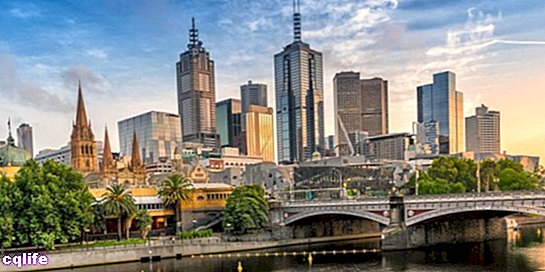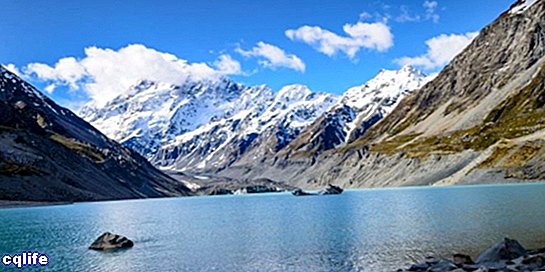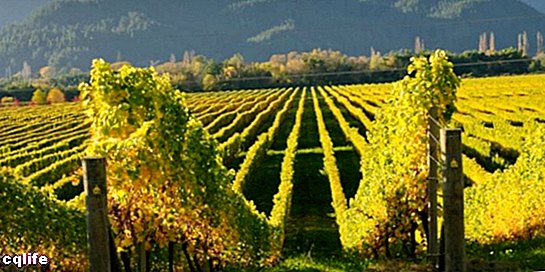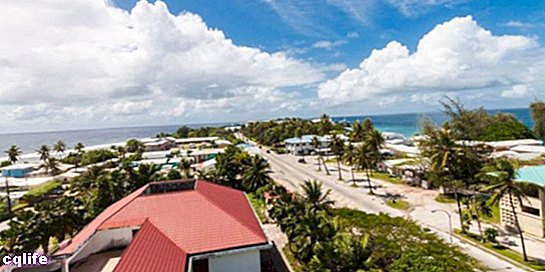- What is Oceania?
- Oceania Features
- Climate of Oceania
- Relief of oceania
- Flora and fauna of Oceania
- Oceania Economy
- Countries and capitals of Oceania
- Oceania map
- The other continents
We explain everything about Oceania, its climate, flora, fauna and other characteristics of this continent. Also, their countries and relief.

What is Oceania?
Oceania is a continent insular and the smallest of the planet Earth, with an area of 8,500,000 square kilometers, which represents 6% of the planet's land mass. It includes more than 10 thousand islands located in the ocean Central and South Pacific, between Asia Y America. The islands of Indonesia, Taiwan and the Philippines, which belong to Asia, are not part of the mainland.
The continent is divided into four parts:
- Australasia. Made up of the nations predominant from Australia, New Zealand and New Guinea.
- Melanesia. It stretches from New Guinea to the Arafura Sea.
- Micronesia. Made up of thousands of small islands.
- Polynesia. Composed of islands in the central and southern Pacific Ocean, such as Hawaii.
The name of the continent creates confusion because in Spanish-speaking countries it is called “Oceania” and in English-speaking countries it is called “Australia” (after the predominant country on the continent).
In 1975, the Hungarian biologist Miklos Udvardy identified the “biogeographic regions” of the planet, that is, the large territories that are representative of an ecological unit (biome) in which plants and the animals they thrive in isolation for long periods of time.
Oceania is considered one of the eight "ecological zones" on the planet's surface, in addition to the Palearctic, Nearctic, Afrotropical, Neotropical, Australasia, Hindomalayan and Antarctic. The purpose of this classification is to contribute to the conservation of the environment, based on the recognition of the areas for their adequate preservation.
Oceania Features

Oceania is estimated to have a population of 42 million inhabitants, which are concentrated in cities along the southern and eastern coasts such as Melbourne, Adelaide, Wellington and Sydney. More than 1,500 languages are spoken on the continent, including the main ones, English, French, Hindi and Tokisin (a Creole language with an English lexical base that is spoken in Papua New Guinea).
The religion Protestant is the predominant one and represents 42% of the population. However, the culture Indigenous and colonial influence have had a great impact on religious movements, which is why there are still more than seven different religions.
Climate of Oceania

The climate of Oceania is tropical, subtropical and, in certain regions, temperate with seasons that vary from humid to dry. The more humid areas, such as the Papua New Guinea region, are covered with woods with large leaves and jungles.
In drier areas, grasslands, bed sheets and bushes. In the New Zealand region there are some glaciers (due to the temperatures colder and strong winds) that extend to merge with the coastal areas of the continent.
Relief of oceania
Mount Wilhelm is the highest peak on the continent.The geography of Oceania can be divided into three groups of islands according to their composition:
- Continental islands. They present very varied characteristics.
- High islands. Pretty uniform.
- Low islands. They are also uniform but with less altitude.
Easter Island (the easternmost island in Polynesia) used to be a region of lush forests, but human action triggered a collapse of the ecosystem, so today this is an area of large grasslands.
The highest peak on the continent is Mount Wilhelm, 4,509 meters, located in Papua New Guinea and part of the Bismarck Range. The region presents a relief rugged and volcanic type.
Flora and fauna of Oceania

Among the plants stand out the ferns, mosses, fungi and floral plants, which are dispersed through their spores and seeds that can remain in the air and travel long distances, because of the wind.
Some seeds have sticky substances that adhere to the feathers of birds and can reach even greater distances. In regions with a temperate or dry climate, eucalyptus and acacia forests predominate.
Native animals include the kangaroo, koala, Tasmanian devil, platypus, uombat and kiwi (a bird).
Because the islands of Oceania do not connect with another large landmass, migration of land animals, so there are few species of mammals natives. However, humans have introduced various species such as Malaysian pigs, dogs, rats, cats, mongooses, sheep, and goats.
Oceania Economy

Despite the fact that Oceania is a territory of reduced dimensions compared to other continents, it has 10 types of currencies or dollars: the Australian dollar, the Fiji, the United States, the Solomon Islands, Kiribati, New Zealand, Kina, Pa ' anga, Tālā and Vatu.
The continent developed very competitive financial markets worldwide, such as those of Australia and New Zealand, characterized by industrial growth, the variety of agricultural products, exports (especially of metals, seeds and natural gas) and import (of machinery, transport equipment and Petroleum).
Countries and capitals of Oceania

At the end of the 19th century and during the 20th century, the British colonies became independent from Great Britain: first the largest such as Australia and New Zealand, then the smaller nations such as the Solomon Islands, Fiji and Kiribati followed. Currently, Oceania is made up of 14 countries:
- Australia. Capital: Canberra
- Fiji. Capital: Suva
- Marshall Islands. Capital: Majuro
- Solomon Islands. Capital: Honiara
- Kiribati. Capital: Tarawa (or "Bairiki" in the Spanish language)
- Micronesia. Capital: Palikir
- Nauru. Capital: Yaren
- New Zealand. Capital: Wellington
- Palau. Capital: Ngerulmud
- Papua New Guinea. Capital: Port Moresby
- Samoa Capital: Apia
- Tonga Capital: Nukualofa
- Tuvalu Capital: Funafuti
- Vanuatu. Capital: Port Vila
Oceania map
Asia is the continent with the largest number of inhabitants (with 4.7 billion), followed by Africa (with 1,110 billion), America (with 1,095 billion), Europe (with 801 million) and Oceania (with 40 million).
Antarctica has a population that varies according to the time of year, due to the harsh climatic conditions: it has about 4,500 inhabitants during the summer and about 1,000 inhabitants in the winter.
